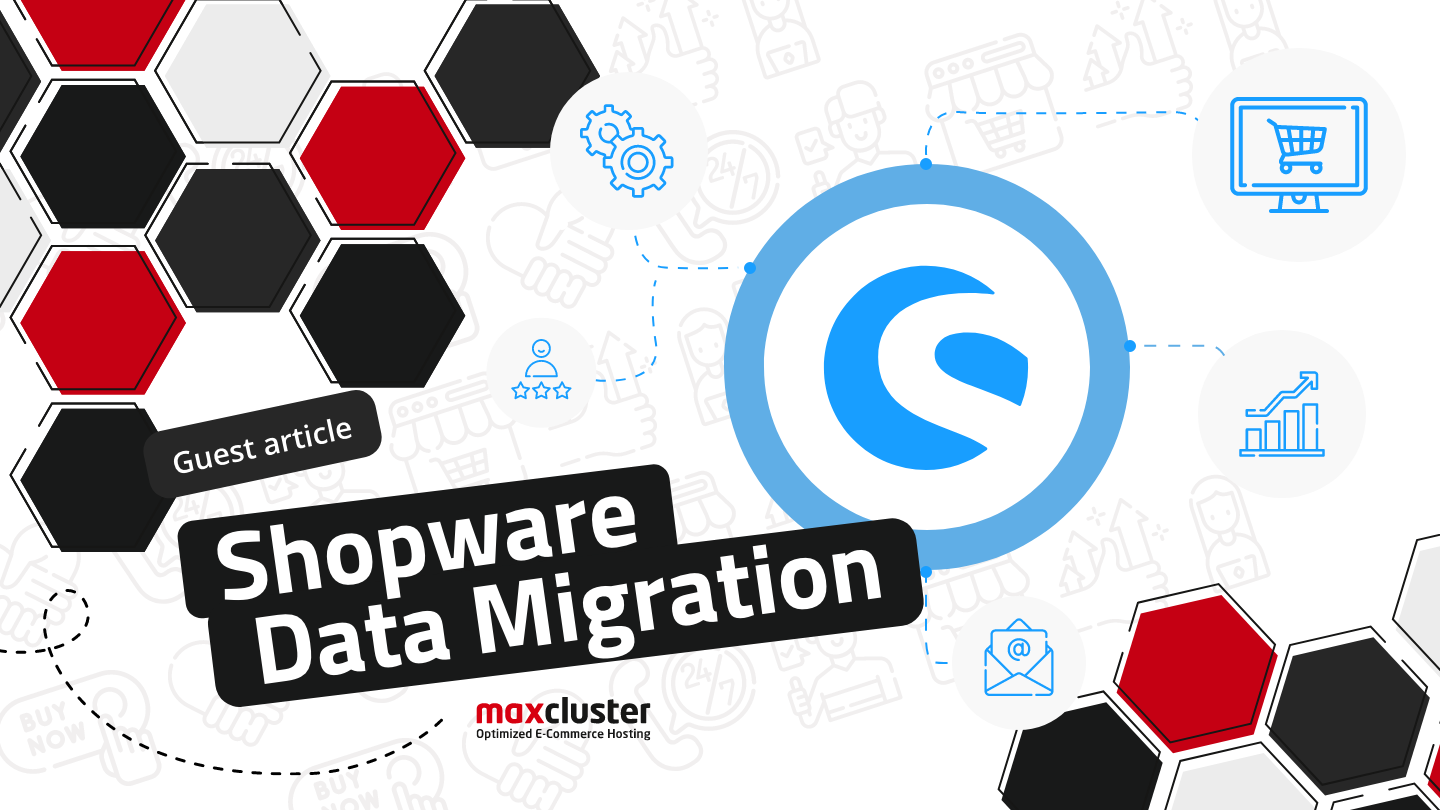
Careful planning is essential for data migration to Shopware 6 to avoid potential pitfalls. In this blog post, you'll find everything you need to know about this topic.
Is a smooth data migration from Shopware 5 to Shopware 6 possible?
Beyond implementing the new front-end and interface solutions, one of the biggest challenges is transferring existing data. Although Shopware AG offers a migration tool, many partner agencies and other providers report that various datasets don't fully transfer. Additionally, the tool tends to fail with large data volumes. If only a fraction of the data can potentially be migrated by the go-live date and it's uncertain whether the migrated data will be fully transferred, there is no guarantee of a smooth and worry-free system transition. This issue is not unique to Shopware; different problems can arise in any data migration, often becoming apparent only when the project is on the brink of failure or has already failed.
The Challenges of Data Migration
Expect possible data errors, which can occur either during the migration process itself or due to rarely used data that, though always incorrect, only cause issues due to changes in the new API or database. Blind trust in IT experts can be problematic if the departments are not adequately involved in the data migration or if they are not informed about necessary technical changes to the data, which can have far-reaching consequences.
- Using file formats like CSV or Excel in the migration process poses many potential problems. These formats cannot store and transport typing information from the MySQL database. Additionally, there are limitations on file sizes and the number of records per file. Line breaks and special characters need to be specifically quoted and post-processed. Important information can be lost or corrupted in the process.
- Often, outdated data in the old database needs to be cleaned. The time required and the methodology for segregating, handling, and extracting the data to be migrated are often underestimated.
- Denormalization is frequently used for performance reasons or to simplify information storage. This degradation of technically clean data structures leads to redundant storage of the same information. During data migration, the data must be examined in terms of relationships or content to decide whether to access the original raw data or potentially already modified data replicas.
- If the process time for complete migration of data into the new target system is unknown, unforeseen circumstances can arise, exceeding the planned times for the final migration run before the go-live, causing delays or even preventing completion.
- A seemingly successful data migration can later reveal hidden problems post-go-live, with negative consequences. If the new shop is already live, the repercussions can be particularly unpleasant, such as customers complaining about incorrect prices or silently leaving.
- Manual corrections to data are error-prone and labor-intensive, especially if repeated. Changes are often hard to trace if unauthorized and undocumented.
Optimizing Data Migration to Shopware 6
How can you best prepare for data migration to Shopware 6, and what methods or tools increase your chances of success? Here are some tips:
- Start the data migration early in the project. The earlier usable data is available in the test system, the better.
- Assign responsible individuals in the departments who know the data well and can quickly identify errors and issues.
- Create a list of potential weaknesses and develop a checklist from it. Place complex areas of the shop, which are more challenging to test, at the end. If basic data is wrong or missing initially, there's no point in testing the more complex areas later.
- Allow sufficient time. The effort required to clean up old data, develop the migration solution, and test is often underestimated. Necessary coordination, change requests, and error corrections also come on top.
- Avoid manual work on the data as much as possible. If manual interventions are necessary, document them. Create a to-do list in advance that you can adjust and expand as needed.
- Avoid using file formats like CSV or Excel during the migration. They can cause more problems than you might think.
- Consider legal requirements and customer needs. Determine which data you need to migrate to meet legal requirements or customer expectations, such as order history.
- Focus on automation. The migration solution should ideally populate the target system quickly and fully autonomously with the data, performing all necessary transformations. If errors occur, the solution must be able to delete the already migrated data to start cleanly.
- Leave data migration to experts familiar with databases, APIs, and process-oriented automation.
- Check if an agile replicating migration solution can be implemented. This works like an interface, continuously transferring new and changed data to the target system, even considering new data sources. This way, problems can be identified early, and the data status is always up-to-date.
Conclusion
If you need to migrate data to Shopware 6, it is crucial to review the potential pitfalls mentioned and ensure a well-planned implementation path. At DATANAUT, we have had positive experiences with the agile replicating migration solution method. This approach is especially suitable if you want to handle data migration and the implementation of new interface solutions together.

About DATANAUT
In 1996, Maico Friedrich laid the foundations for DATANAUT GmbH. In the course of numerous customer projects over the years, he developed a portfolio of more than 100 interface modules, which he combined into one universal interface. For each new project, this universal interface only needs to be adapted to the customer's individual requirements. In fact, 80% of the work is already done. However, the customer still has the flexibility to decide which inputs and outputs to have and how to process them. DATANAUT thus combines the advantages of individual software (flexibility, customization) with the benefits of standard software (future-proof, calculable).




